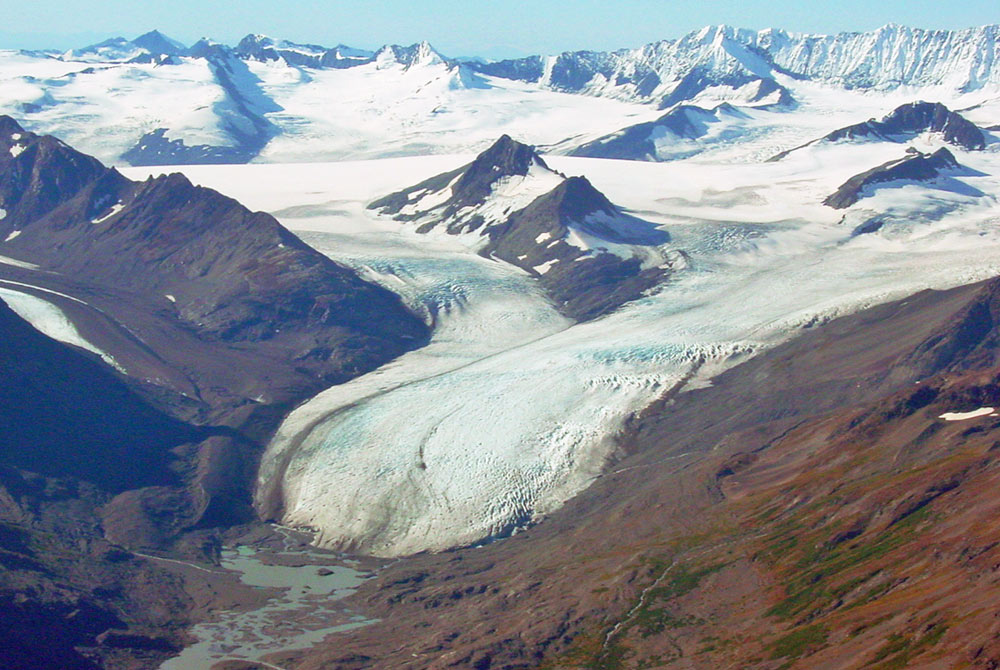The USGS Water Science School
As this picture of Stephens Glacier in Alaska shows, glaciers are just frozen rivers of ice flowing downhill. Glaciers begin life as snowflakes. When the snowfall in an area far exceeds the melting that occurs during summer, glaciers start to form. The weight of the accumulated snow compresses the fallen snow into ice. These "rivers" of ice are tremendously heavy, and if they are on land that has a downhill slope the whole ice patch starts to slowly grind its way downhill. These glaciers can vary greatly in size, from a football-field sized patch to a river 100 miles (161 kilometers) long.
During the last ice age glaciers covered much of the northern hemisphere, carving out and rearranging the landscape as thy slid downill. The land you live on now may have been changed to what it is to today due to an ancient glacier. Glaciers are notorious for carving out U-shaped valleys through mountain regions.
This image shows how a glacier is really like a river running in (very, very, very) slow motion.

Credit: Bruce F. Molnia, USGS